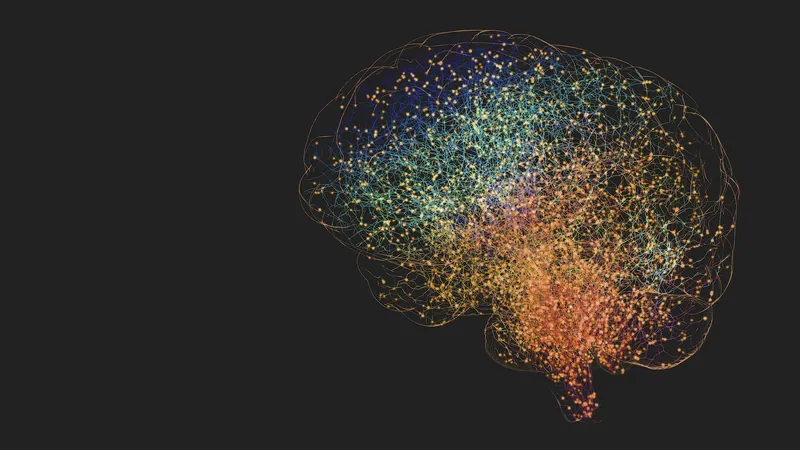
Revolutionary Quantum Sensing Technology Unveils Secrets of Sub-Atomic Signals!
2025-01-06
Author: Charlotte
Revolutionary Quantum Sensing Technology Unveils Secrets of Sub-Atomic Signals!
In a significant leap forward for molecular science, engineers from the University of Pennsylvania have developed an innovative quantum sensing technology that reveals incredible details about individual atoms, potentially transforming various fields from drug development to protein research.
Since the advent of the 1950s, scientists have leveraged radio waves to capture the molecular “fingerprints” of substances, invaluable in applications such as MRI scans and explosive detection. However, traditional techniques rely on signals that aggregate data from trillions of atoms, leaving subtle variations between individual molecules unnoticed. This limitation poses a challenge, especially in protein research, where minute differences can mean the difference between health and disease.
Now, thanks to groundbreaking advancements, this barrier has been shattered. Scientists at Penn Engineering have created a new variation of nuclear quadrupolar resonance (NQR) spectroscopy, utilizing quantum sensors that can detect NQR signals from single atoms—a feat once thought impossible. This extraordinary sensitivity paves the way for revolutionary breakthroughs in areas like drug development, where an understanding of molecular interactions at the atomic level is crucial.
"This technique allows us to isolate individual nuclei and uncover tiny differences among supposedly identical molecules," stated Lee Bassett, an Associate Professor at Penn and a key figure behind the research. "By focusing on a single nucleus, we can reveal details about molecular structure and dynamics that were previously obscured. This capability opens up the natural world to us at an unprecedented scale."
The breakthrough occurred unexpectedly during routine experiments when Alex Breitweiser, a recent PhD graduate from Penn, was working with nitrogen-vacancy (NV) centers in diamonds—known defects in diamonds often exploited for quantum sensing. He observed unusual data patterns that initially seemed like experimental noise but persisted despite thorough troubleshooting. A return to foundational texts from nuclear magnetic resonance led Breitweiser to identify a significant yet overlooked physical mechanism that explained their results.
"We weren’t just observing an anomaly; we were on the cusp of a new realm of physics," noted Breitweiser, who now works as a researcher at IBM.
The team's work was further enhanced through collaboration with experts at Delft University of Technology in the Netherlands, where shared insights helped refine the theoretical understanding of the newly identified phenomenon. The combination of experimental physics, quantum sensing techniques, and theoretical modeling has enabled the team to capture single atomic signals with unparalleled precision.
"This is akin to isolating a single row in a massive spreadsheet," explained Mathieu Ouellet, another key contributor to the research. "While traditional NQR gives you a broad overview, our method reveals the unique properties of individual data points."
The researchers faced considerable challenges in deciphering the theoretical aspects of their experimental findings, likening the process to diagnosing a medical mystery: multiple potential causes can lead to unusual symptoms, and pinpointing the right one is often arduous.
Looking to the future, the implications of this new method are vast. By revealing hidden molecular phenomena, it may help scientists unlock the complexities of the molecules that shape our world, thereby addressing critical scientific challenges in medicine and beyond.
Quantum sensing is no longer just a concept of the future— thanks to this groundbreaking work, we are now closer than ever to unlocking the secrets of the universe at an atomic level! Are you ready for the revolution?









 Brasil (PT)
Brasil (PT)
 Canada (EN)
Canada (EN)
 Chile (ES)
Chile (ES)
 Česko (CS)
Česko (CS)
 대한민국 (KO)
대한민국 (KO)
 España (ES)
España (ES)
 France (FR)
France (FR)
 Hong Kong (EN)
Hong Kong (EN)
 Italia (IT)
Italia (IT)
 日本 (JA)
日本 (JA)
 Magyarország (HU)
Magyarország (HU)
 Norge (NO)
Norge (NO)
 Polska (PL)
Polska (PL)
 Schweiz (DE)
Schweiz (DE)
 Singapore (EN)
Singapore (EN)
 Sverige (SV)
Sverige (SV)
 Suomi (FI)
Suomi (FI)
 Türkiye (TR)
Türkiye (TR)
 الإمارات العربية المتحدة (AR)
الإمارات العربية المتحدة (AR)